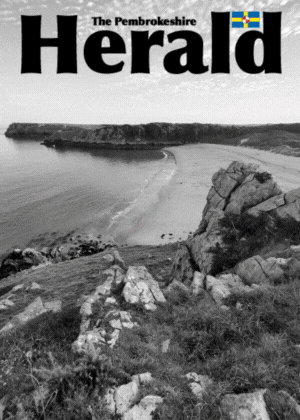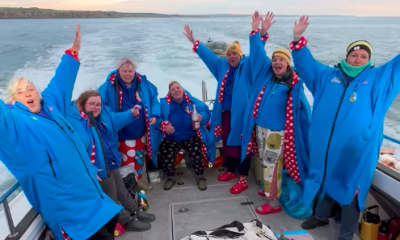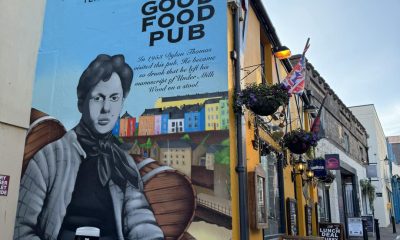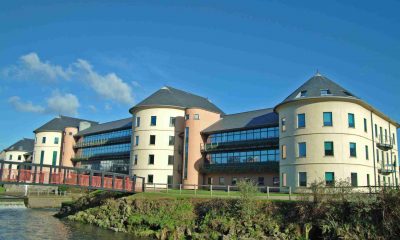Community
How do we know that man went to the Moon? The Herald explains
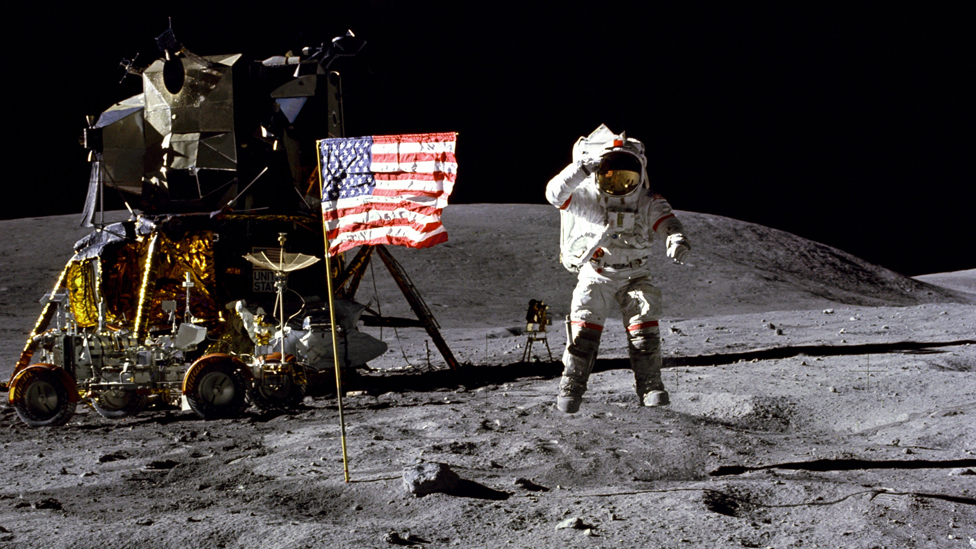
EVERY single argument claiming that NASA faked the Moon landings has been discredited. But even today, 50 years later, people discuss conspiracy claims online, on television programmes and around the dinner table.
Herald moon fact: With a powerful amateur telescope, you can see the Apollo landing sites and, if you look at the photos from the Lunar Reconnaissance Orbiter, you can spot the remnants of the Apollo missions yourself.

Were the Moon landings faked?
If you find yourself in a debate questioning whether humankind first stepped on the Moon on 20 July 1969, the chances are that you are woefully underprepared. Most people take it as gospel that the US government, NASA, the 12 astronauts in total who have walked on the Moon, and the 400,000 people involved in the Apollo programme would have neither the will nor the way to fake one of humanity’s greatest ever achievements.
But there are those who think the landings were a hoax. They claim the US government faked Apollo 11 and later missions either to deal a crucial blow to the USSR in the Space Race, or to boost NASA funding, or to divert attention away from the Vietnam War. The argument for any of these viewpoints rests on finding evidence that the landings were faked.
And more often than not, people point out peculiarities in specific images or videos to deal the critical blow. If someone uses these oddities as evidence, what do you say? Here are the most common arguments that support this view, and why each of them is wrong.
Evidence of the moon landings include items left there, reflectors installed on the surface, and lunar rocks brought back to Earth.
Photographic evidence
One of the most popular conspiracy arguments is that there are never any stars in Apollo photos. Free from Earth’s light pollution and hazy atmosphere, you would expect to see thousands of stars in all the astronauts’ images. Unfortunately, this argument rests on the photos being snapped during the lunar night. All manned missions to the Moon took place in sunny daytime. This meant starlight lost the battle against the very bright surface of the Moon, too dim to show up in photos.
Another common argument is that the crosshairs that appear in many Apollo images sometimes appear to be behind objects in the photos. If the images were real, this would be impossible, suggesting someone painted them on. But testing here on Earth has shown that the brightly lit objects make the crosshairs appear fainter. When these images are copied or scanned some of this detail is lost completely, giving the effect that the crosshair is behind the object in certain shots.
Others point to an oddity in a photo of a Moon rock taken during the Apollo 16 mission. There appears to be a ‘C’ written on it, like a lettered movie prop. Again, analysing the original photo there is no anomaly – the ‘C’ isn’t there. Most likely it was a piece of hair or thread introduced during copying.
A more subtle argument that the landings were faked is based on various misunderstandings of NASA equipment and lunar physics. A well-known example is the American flag that Neil Armstrong and Buzz Aldrin placed on the Moon. It appears to flutter in the wind in some photos. How could this happen when the Moon has no wind?
In fact, it isn’t fluttering at all. A horizontal rod at the top of the pole holds the flag unfurled. This makes it look like the wind is stopping it from hanging down. And there is a fluttering effect because the weak gravity on the Moon is not strong enough to uncrumple the flag. After a little waving while the astronauts planted the flags into the Moon’s surface, they have remained still ever since.

Fried by radiation
Perhaps the most convincing argument that the landings were faked has to do with something called the Van Allen belts. These are two giant doughnut-shaped belts surrounding the Earth. They are made of highly energetic charged particles from the solar wind. Some people believe humans couldn’t have passed through these belts without being exposed to lethal doses of radiation.
This was a genuine concern before the Apollo missions. And it is the reason scientists behind Apollo 11 made sure they protected the astronauts as best they could. They insulated the spacecraft from radiation with an aluminium shell. And they chose a trajectory from the Earth to the Moon which minimised the amount of time spent in the Van Allen belts.
Readings from the nine Apollo missions that reached the Moon showed the astronauts’ average radiation exposure was 0.46 radiation-absorbed dose (rad). This proved NASA was right to shield the astronauts from radiation. Though it’s less than that experienced by some nuclear energy workers, 0.46 rad is around 10 times more than the radiation exposure of medical professionals who routinely work with x-ray and radiotherapy machines.
Proof we walked on the Moon
Of course, until we return to the Moon there will always be anomalies and oddities in the records that can spark new claims that the Moon landings were faked. But it is the sheer size and variety of this record that proves every one of these claims to be false.
From the Apollo Moon missions, there are 8,400 publicly available photos, thousands of hours of video footage, a mountain of scientific data, and full transcripts and audio recordings of all air-to-ground conversations. We even have 382 kilograms of Moon rock that Apollo astronauts brought back to Earth. These rocks have been independently verified as lunar by laboratories around the world, ruling out a US conspiracy.
If this is not enough to convince the most hardened sceptic, NASA’s Lunar Reconnaissance Orbiter (LRO) might sway them. Today, LRO takes high-resolution pictures of the lunar surface from a low orbit. During its mission, it has captured the landing sites and the abandoned descent modules and rovers from the Apollo missions. And its resolution is so good it has picked up the dark squiggly paths that the astronauts’ footprints made. Spacecraft from China, India and Japan have also spotted these landing sites, providing further independent verification of the landings.
A final nail in the coffin of the Moon hoax theories is a simple instrument installed 50 years ago by Apollo 11. During their day on the Moon, Armstrong and Aldrin planted a lunar laser ranging retroreflector array on the surface. It’s still operational today and allows us to reflect lasers off of it and measure the distance to the Moon down to the centimetre. We simply couldn’t do this if we hadn’t visited the Moon.
Community
Two Pembrokeshire residents honoured in King’s Birthday List
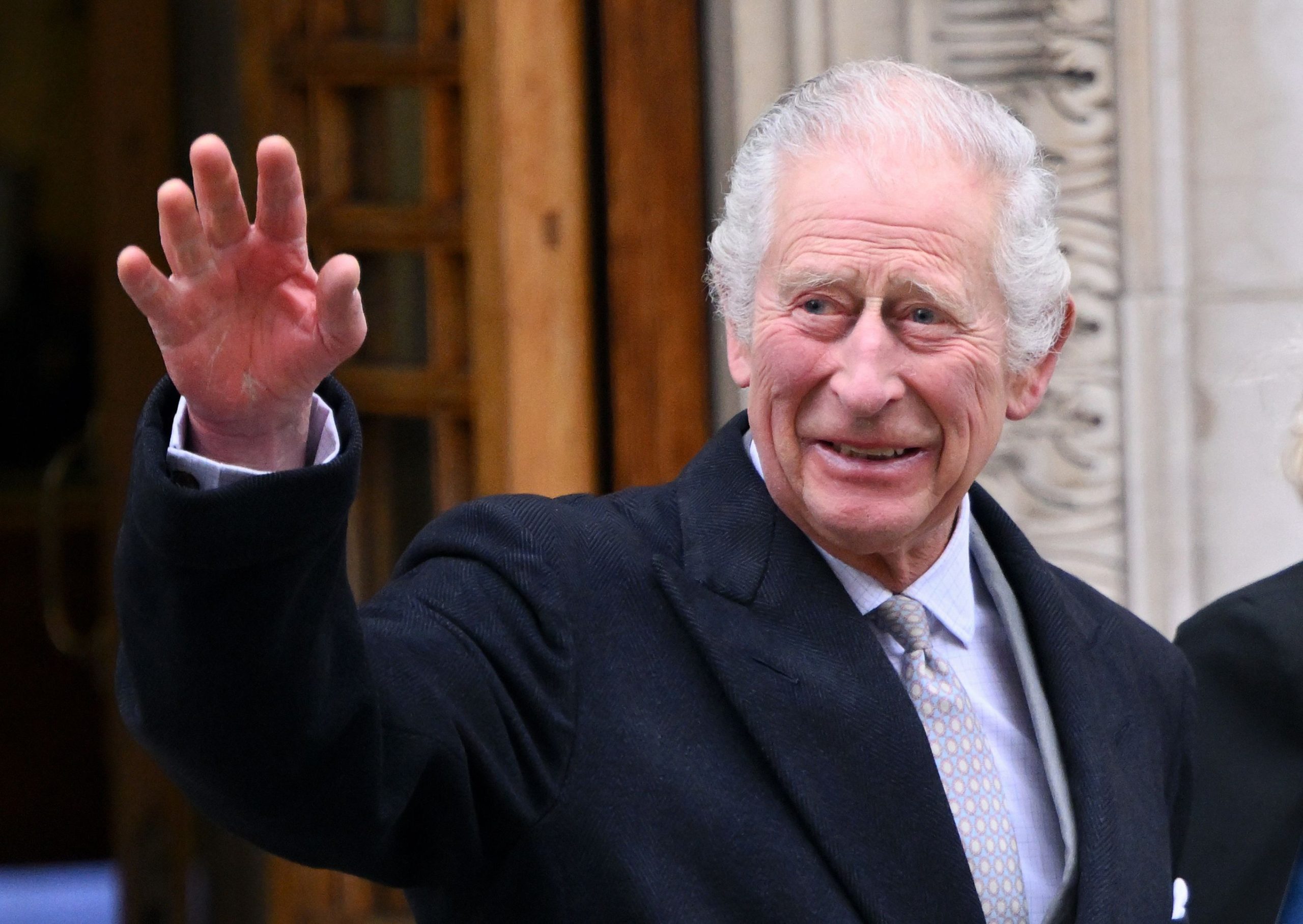
PEMBROKESHIRE is celebrating the achievements of two distinguished locals who have been recognised in the King’s Birthday Honours. John Fletcher, a dedicated farmer, and Professor Andrew Campbell, a prominent academic, have both been awarded the MBE for their respective contributions.
John Fletcher: Champion of Shire Horses
John Fletcher, 70, the founder of Gentle Giants Shires in Moylegrove, has been honoured with an MBE for his services to the conservation of shire horses. His journey with these majestic animals began at the tender age of nine on his parents’ farm at Penrallt Uchaf. Inspired by his father, who had previously used a shire horse for ploughing, young John developed a lifelong passion for the breed.
In 2003, following the sale of the farm’s milking herd, Gentle Giants was established. Today, the organisation boasts a global following of 69,000 on Facebook and provides shire horses for weddings, funerals, and other events across the UK. The Gentle Giants have also featured on several television shows, including “Don’t Tell the Bride” and “Coast and Country”, as well as in the award-winning film “Calon Gaeth”.
John’s dedication to shire horses has not gone unnoticed. In 2021, during a Royal visit to Nevern, he and his shire horse, Prince George, met His Royal Highness. The future King praised John’s efforts, expressing his gratitude and interest in the farm’s breeding programme.
Gentle Giants remains a family-run venture, and the Fletcher family took to social media to celebrate John’s accolade. They expressed immense pride in his tireless work and commitment to training and promoting shire horses. “Not one to take things easy, he always has a new project on the go,” they shared. “Buyers often return due to the high standards achieved by the horses he has trained.”
John’s influence extends beyond the UK, with his horses working and competing as far afield as Norway and Italy. He is passionate about educating the public on the versatility of shire horses and enjoys welcoming visitors to the farm in Pembrokeshire.
Professor Andrew Campbell: Advocate for Tourism

Also honoured with an MBE is Professor Andrew Campbell of Goodwick, recognised for his services to tourism. Professor Campbell, who describes himself as “passionate about tourism, cake baking and swimming in the sea,” has made significant contributions to the field.
A professor of practice in tourism with the University of Wales, he is currently the chair of the Welsh Government’s Economic Ministerial Advisory Board. Until September 2021, he served as chair of the Wales Tourism Alliance, representing over 6,000 tourism businesses throughout Wales. The Welsh Government describes him as “a respected academic within tourism, a key economic sector,” noting his valuable insights into the challenges facing the tourism and skills sectors.
Living and working in north Pembrokeshire, Professor Campbell is known for his hands-on approach and commitment to enhancing the region’s tourism landscape. His recognition in the King’s Birthday Honours underscores the importance of his work and his dedication to the community.
Community
GWR advises customers to check before travelling on Sunday 16 June

GWR is advising customers to check their journey tomorrow morning before leaving home because of a shortage of train crew.
With fewer people available to work, GWR is warning of short notice cancellations and alterations, especially on long distance services between London Paddington and Bristol Temple Meads.
Journey planners and other industry systems will not be correct until the early hours of Sunday morning, as GWR works to staff as many trains as possible – and customers are being warned that they will need to check their journey on Sunday morning.
If your train is cancelled, you can use your existing ticket on the next available service.
Rail replacement buses will operate on the Kemble line between Swindon and Gloucester.
GWR expects to run a full level of service on Monday 17 June.
Community
Falkland Islands flag raised in Milford Haven to mark Liberation Day
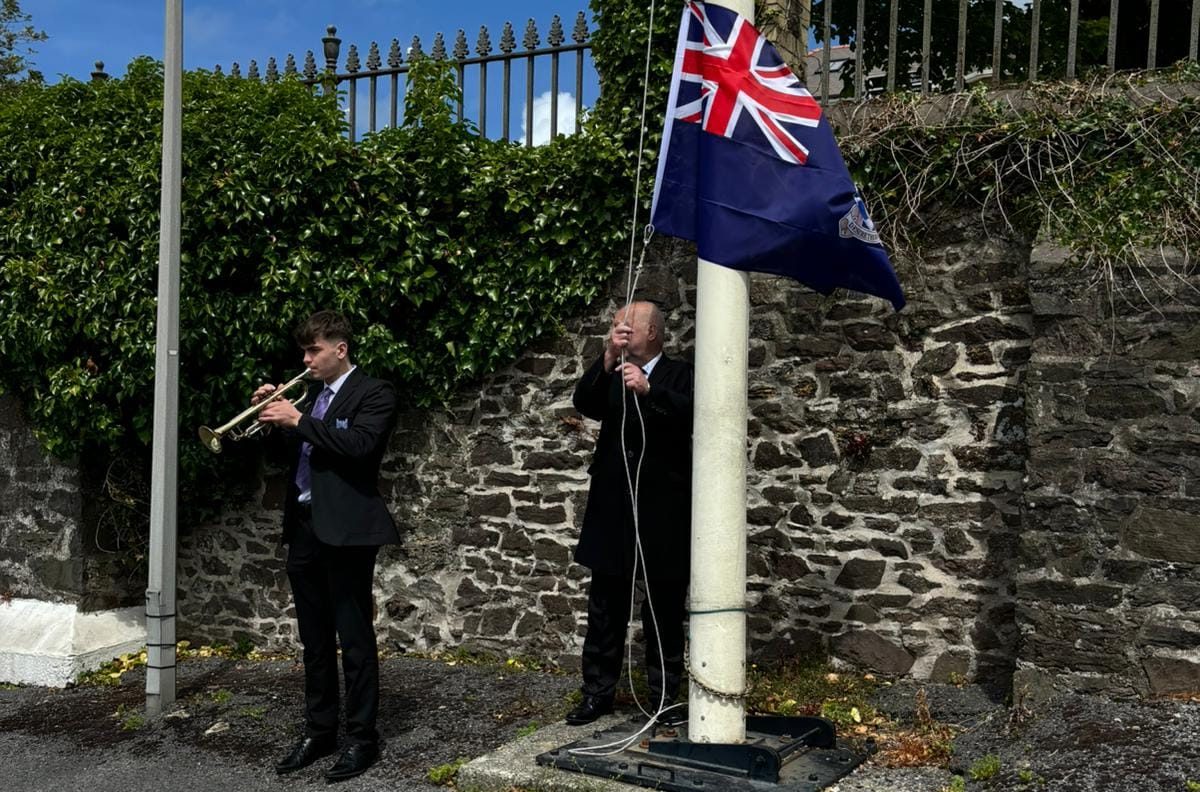
THE Falkland Islands Government flag was raised at Pembrokeshire County Hall and the British Legion in Milford Haven to commemorate Liberation Day, marking the end of the Falklands War on 14th June 1982. This solemn event was carried out by veterans of HMS Ardent, a Royal Navy frigate that played a crucial role in the conflict.
The Mayor of Milford Haven, Cllr William Elliott was joined by his mother, Mrs Wendy Elliott and the Deputy Mayor Cllr Eddie Davies for the HMS Ardent Association Flag Raising and Reception at Royal British Legion Club. Also in attendance were a number of Pembrokeshire County Councillors including Milford Haven’s Cllr Viv Stoddard, and Cllr Terry Davies.
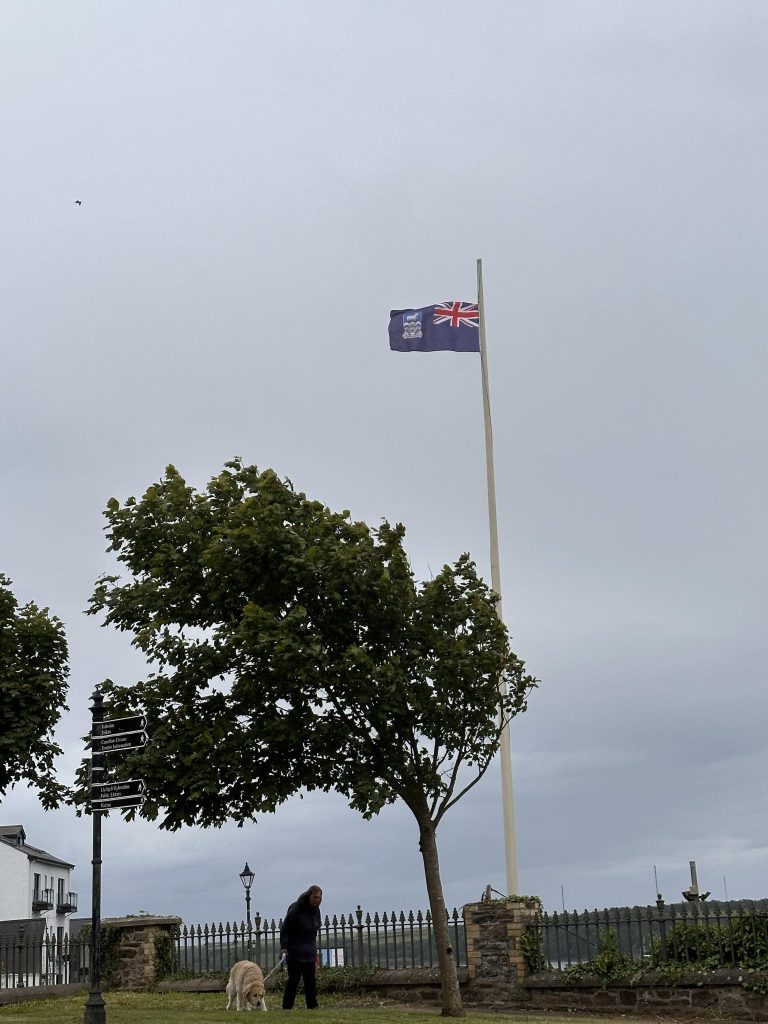
On 21st May 1982, HMS Ardent was lying in Falkland Sound when it came under fire from the Argentine Air Force. Twenty-two of the 199 crew members on board were killed, and the ship sank the following day after suffering devastating damage.
As the first wave of Argentine aircraft attacked HMS Ardent, cook Jon Major threw himself to the floor and prayed. He survived, but 22 of his shipmates, including a close friend, did not, and dozens more were injured.
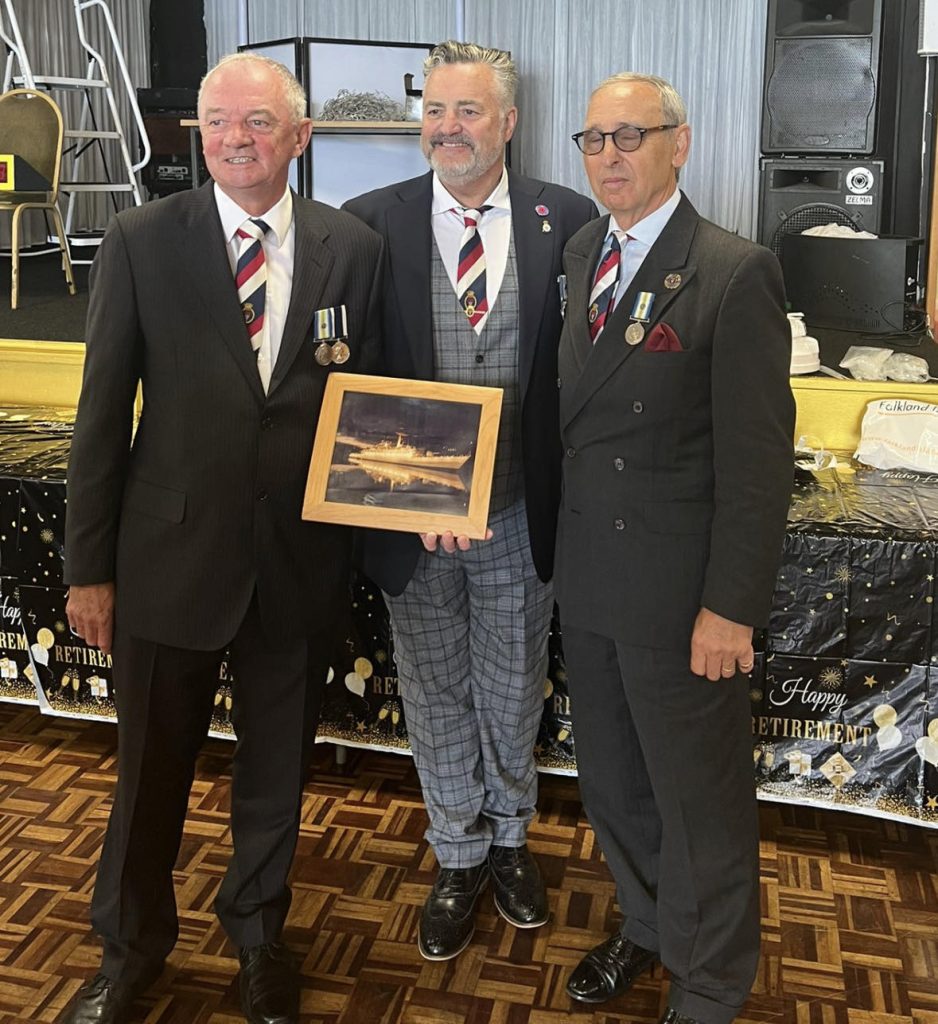
Speaking anniversary of the attack, Mr Major, then 62, recounted the terrifying moments. “Anyone who said they weren’t scared would be lying. It was extremely frightening,” he said. “We were all told to take cover when we saw the aircraft coming in. We all lay on the floor with our hands on top of our heads. When the first bombs hit, the whole ship shuddered. The first thing I did was pray.”
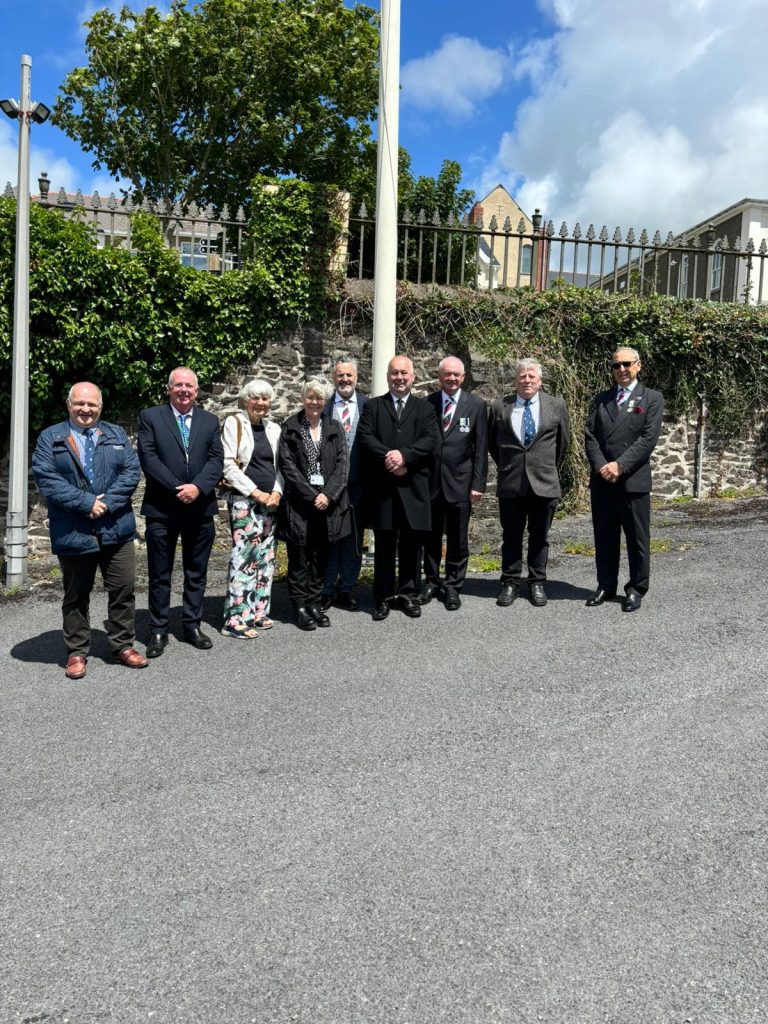
Mr Major was one of eight cooks onboard the Type 21 frigate. Three members of the close-knit team were killed. “Cooks were used for what is known as ‘defence watch’, watching out for incoming aircraft. It was eight hours on, eight hours off,” he explained. “When we were off-duty, we tried to get our heads down as best we could, but there was always something to do. We’d often be involved in moving shells and other ammunition around the ship.”
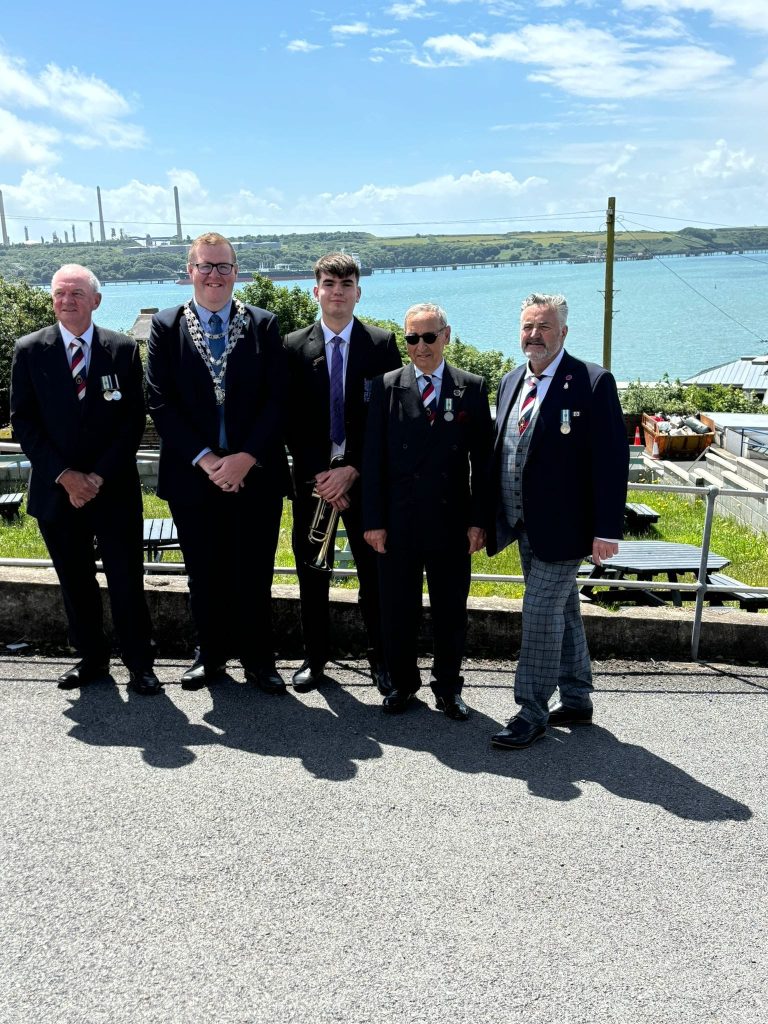
Mr Major was also a first-aider, although the scale of the damage inflicted in the raids meant he could do little to help. “Most of the damage was down aft (the back of the ship),” he said. “The bombs took out the galley. Because of the smoke, we couldn’t get down there.”
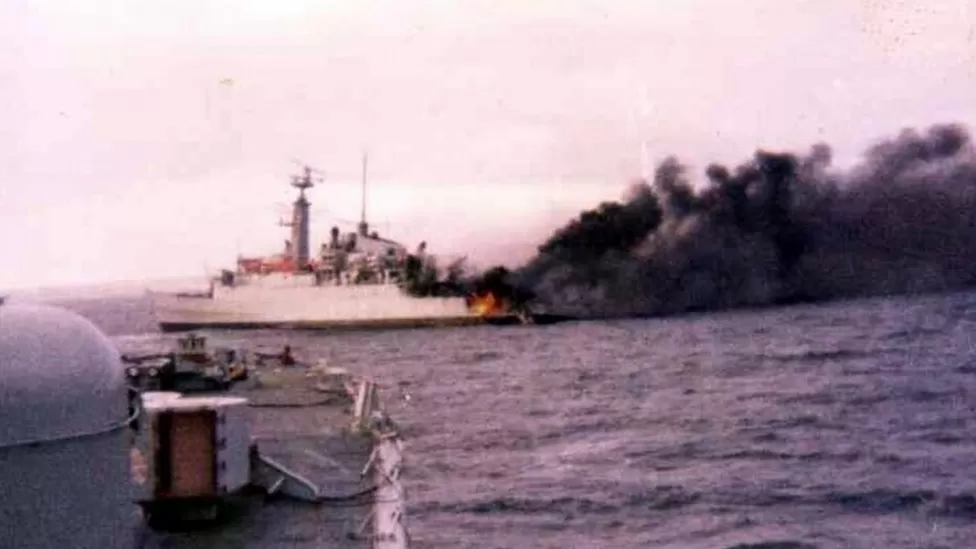
As the attack continued, the captain, Commander Alan West, gave the order to “abandon ship”. According to the official report into the loss of HMS Ardent, the ship “succumbed to two determined multi-aircraft attacks, which she had little chance of deflecting, and was seriously damaged”. The report added that the damage to the vessel would have been greater had a number of the bombs dropped not failed to explode.
Mr Major recalled, “To us, it all seemed to happen in seconds.”
Survivors of the attack were transferred to HMS Yarmouth and taken to South Georgia, before making the long voyage home where they were greeted by their families. “My mum and dad came down from Hull,” Mr Major said. “I remember just feeling numb.”
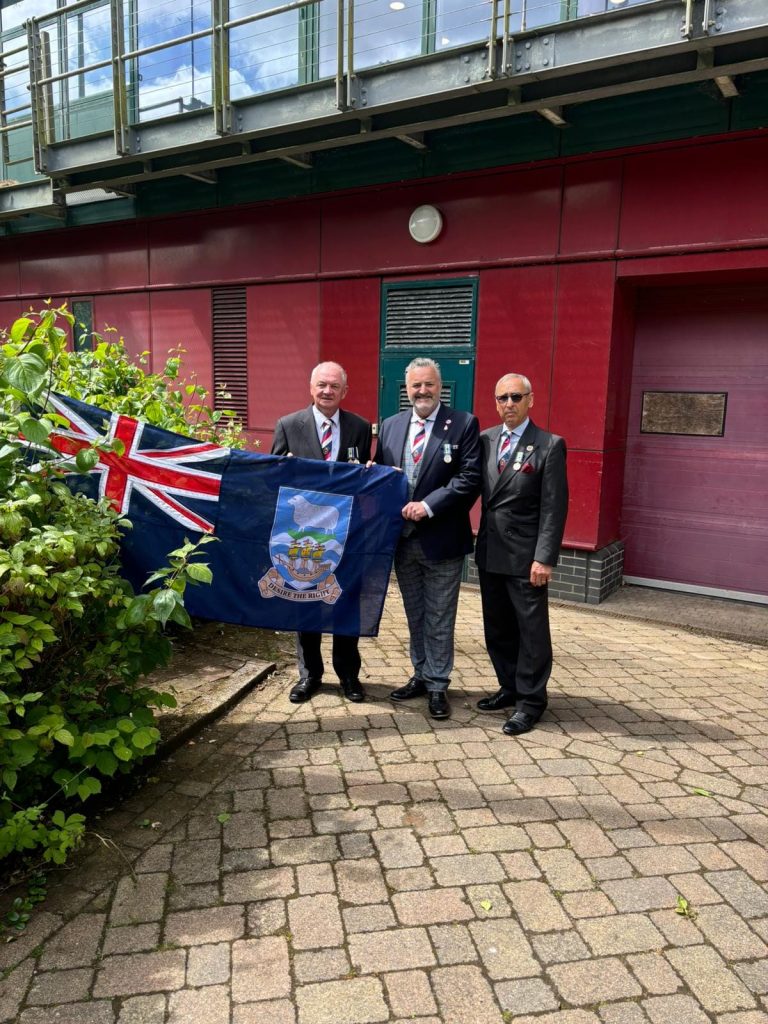
After returning to the UK, he and his fellow crew members were given four weeks’ “survivors leave” before being redeployed. “It was basically a case of ‘get on with the rest of your lives,'” he said. “Back then people didn’t really talk about mental health. I think it would have helped people if they had talked.”
Mr Major remained in the Royal Navy for another 20 years before leaving the service. “I had some great times, but I also had some pretty bad times, like losing 22 shipmates. It’s something you don’t forget,” he said.
Liberation Day commemorates the victory and liberation of the Falkland Islands from Argentine occupation, a conflict that lasted 74 days and concluded with the surrender of Argentine forces. The raising of the flag serves not only as a remembrance of those who perished but also as a celebration of the enduring freedom and sovereignty of the Falkland Islands.
The bond between Milford Haven and HMS Ardent remains strong, symbolising the town’s support for the Royal Navy and its dedication to remembering those who served and sacrificed. The flag-raising ceremony is a testament to the bravery of the crew of HMS Ardent and the resilience of the community that honours their memory.
In total, 255 British military personnel, three islanders, and 649 Argentine soldiers died during the 74-day Falklands War. A service to mark the 40th anniversary of the Falklands conflict will be held at 14:00 BST on 19th June at Hull Minster.
-
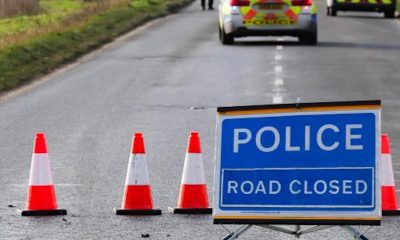
 News2 days ago
News2 days agoTwo people killed, and two injured in A477 traffic collision
-

 News4 days ago
News4 days agoYouth rescued after 40-metre jump off bridge at Neyland Marina
-
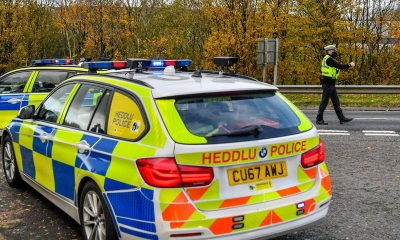
 News2 days ago
News2 days agoAppeal for witnesses after two killed in A477 collision
-

 Crime5 days ago
Crime5 days agoPembrokeshire postman admits driving after taking cocaine
-
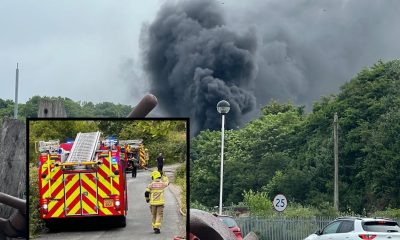
 News5 days ago
News5 days agoFire crews tackle large garage blaze in Milford Haven
-
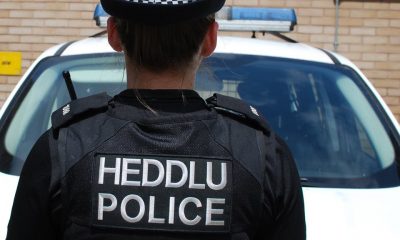
 Crime4 days ago
Crime4 days agoDock woman sentenced for jumping on police officer
-

 Business1 day ago
Business1 day agoRWE launches pre-application consultation for RWE Pembroke Battery
-
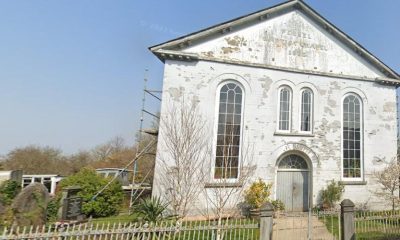
 Community6 days ago
Community6 days agoHouse conversion of Baptist chapel refused












